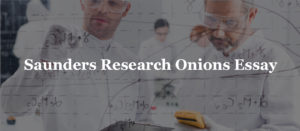Incentive Plans
Incentives are awards offered to employees when they successfully achieve pre-defined targets. Incentive plans comprise of a list of incentives that are planned to be given to those employees or group who will demonstrate exceptional behavior during a specified time period. To remain successful in the market, an organization needs to motivate and retain its employees to be productive and for this, companies adopt various competitive incentive plans that are designed for recruitment, motivation, and retention of employees. Additionally, incentive plans drive the employees to exceed expectations and encourage them to remain committed to their organization. However, an incentive plan must have achievable targets because if not, then employees’ morale will decrease and the plan will turn into ineffective (AZASU, 2014).
Private companies are seen to implement incentive plans more than public companies because Private companies usually aimed to maximize their profits and shareholder value that is likely to be achieved with the help of incentive plans. While Public sector companies have numerous objectives making it difficult to employ incentive plans.
There are different Incentive plans for different levels of employees. The lower level workers that exist at the bottom of the organization’s hierarchy like, first-line supervisors are motivated through different incentive plans as compared to Middle management and Upper management employees. Yet all the incentive plans fall under three types that include: (1) Individual Incentive Plans, (2) Group Incentive Plans and (3) Organization Incentive
Plans. (Amah, 2013). Following are the incentives that are offered to employees under the incentive plans:
Profit Sharing:
A Company gives a percentage of its annual profit to its permanent employees. This profit sharing can be in the form of quick monetary reward or could be added directly to the employee’s retirement programme, like a 401K.
Project Bonus:
A project bonus is an award divided among the team members of a project. As every team member gets the award according to their salary or wages, poor performing members are awarded the same reward as the high performing members of the same level, hence, de-motivating the high performing members.
Stock Options:
Stock shares are usually offered to upper management executives who have contributed a lot in making the company successful. Offering them the opportunity to purchase the company encourages them to work more efficiently that would potentially increase the stock value of the company.
Sales Commission:
these incentives are offered to salespeople specifically during a recession where employees increased their sales when they are offered a commission on their sales along with the base salary.
Recognition:
recognition proves to be a very powerful motivational tool for employees who work hard just to be appreciated in front of their peers. Recognition could be personal as well as public. One of the workable recognition plans includes the “Employee of the Month” program.
Concluding, nowadays the success of an organization is highly dependent on its employees that have become less loyal to their employers. Hence, Incentive plans give the concept that competence, performance, contribution, and skill are the key to success for employees (Magnusson & Nyrenius, 2011).
Reward and Recognition
A reward is offered to acknowledge someone who shows an exceptional performance so that he/she may reveal similar performance again. Rewards are extrinsic or intrinsic in nature. Intrinsic rewards consist of intangible awards that are given for word recognition. These could be a sense of self-achievement, learning or personal satisfaction; while, extrinsic rewards are the tangible or physical awards given to employees when they achieve the targets. These could be a certificate of achievement, a medal or trophy or even a monetary reward. (MikeW, 2017).
Recognition is basically presenting a “thank you”, which could be uttered either verbally or in written form. Individual recognition is carried out privately whereas team recognition is demonstrated in public. There are many ways employers recognize staff contributions, but there are two main divisions between employee recognition styles: top-down, and peer-to-peer.
Top – Down Recognition:
in this, the supervisor of the employees observes and witness their contributions and determination towards work. The employees are given recognition or a token of appreciation not in the form of financial compensation or in the form of engraved pens, greeting cards, and plaques as an award.
Annual Bonuses: annual bonuses are given as a financial reward which is an add-on to the pay cheque given in the fourth business quarter given to the employee on the base of performance in group or individual in an organization.
Quarterly Bonuses: they are just like annual bonuses but are given more frequently, usually on a quarterly basis. They are given for highly excellent performances. Quarterly bonus structures are mostly adopted by sales organizations.
Spot Bonuses: this is an irregular bonus structure compared to annual or quarter bonuses where the bonus is given to the employee on the spot/location in recognition to highly exceptional productivity.
Peer-to-Peer Recognition:
In a peer-to-peer recognition system, the supervisors along the employees are trained and motivated to appreciate each other efforts by empowering them. This recognition falls in many categories which are as follow:
Gold Stars:
Sometimes the organizations give mementos which hold some bonuses or amount which can be exchanged through any real-life item in future. These are basically known as the gold stars which are given as a reward to the employees to encourage them.
Verbal Praise
is the most common and oldest way of peer to peer recognition. An employee is appreciated by other colleagues through some good words. This is mostly informal but sometimes it becomes a part of formal meetings of the staff.
Micro bonuses
are a kind of everyday reward which is given frequently by the manager to the workers or from one colleague to another. It provides several benefits such as on the spot recognition or a direct report from the manager. This form is, however, the quickest of all others and motivates employees as a result of such instant reaction.
Recognition is incomparable and appreciation is sometimes more valuable than money. It increases employees’ personal interest in work, raises their loyalty and produces better results. However, at times money bonus is more important to reward superior results.
Job Satisfaction and Morale
Job satisfaction is the positive attitude and complete harmony of an employee from his job. Job satisfaction is related to an individual’s feeling and his approach towards his work. An employee who enjoys doing his work, participates passionately in his working environment and is happy with his payout is said to be a job satisfied worker. Job satisfaction and morale are linked with one another where the former is an individual behavior and the latter is a group or team involved attitude towards work. According to Flippo “morale is a mental condition or attitude of individual and groups which determines their willingness to co-operate”. Morale is known as an internal feeling which is stimulated through motivation to get the desired results by both an individual and group towards their work.
There are many factors that lead to job satisfaction. Some of them are listed below:
Read more:
-
Organizational factors:
Organizational factors include wages, salaries, and promotions that are given to an employee as an appreciation for his work. It boosts the morale of the individual to work more for the new achievement.
-
Personal factors:
Many people are not satisfied with their jobs and working environment because of their personality and nature. This falls under the personal factor where age and experience also plays an important role.
-
Work and working environment factors
The last factor is the healthy working environment that promotes and gives opportunities to an employee to have a liberty to experiment change in the organization.
Morale also varies from organization to organization. Some of them have high morale and some suffer from low morale. There is a direct relationship between morale and productivity. Higher morale leads to a higher productivity rate in the working environment. Job dissatisfaction leads to a low morale rate which results in loss and wastage of time, energy and investment. High morale helps in removal of subgroups within the groups that eliminate division. The organizational atmosphere, nature of work, employees’ concentration and age are the factors that affect morale.
Factors which affect morale
There are many factors that can improve the morale rate such as two way communication between the groups, improving workers training and motivating them to perform well, proper incentive system and human relation approach. Morale can be measured through an employee survey or periodic interviews by which the weaknesses can be traced.
Morale and job satisfaction shares a deep bond where both works side by side, individually and in groups. It improves sales, creates more opportunities for the organization to flourish and progress.
Strategic Management of HR
The process of implementing various tasks and activities related to the management system in helping and maintaining skilled working team comes under the definition of Strategic Human Resources Management. This skilled workforce manages the entire efficiency and success of the organization in obtaining the strategic goals. This approach helps the organization in the development, rewarding, providing opportunities, and retain the employees providing benefit for the whole organization and employees.
Strategic Human Resource Management demands that the HR department of an organization should not operate independently and remains cut off from the other departments. Instead, it demands the HR departments interact with all the other departments in an organization so as to understand the organization’s goal and formulate strategies according to those objectives. Consequently, the aims of a human resource department will include supporting the goals of the entire organization. Strategic Human Resource Management proves to be an integral part as it exploits the capability and opportunity within the human resource department to support another department to work more effectively.
As strategic management aims to maintain a competitive advantage of an organization, hence, attaining a competitive advantage on the basis of human resources are dependent on the distinctive mixture of an organization’s workforce, strategy, and core competencies that differentiate the organization from other organizations.
Following are the reasons through organizations attain a competitive advantage by adopting strategic human resource management.
- Strategic Human Resource Management promotes proactive instead of reactive behavior.
- Organization’s goals are communicated clearly.
- This system focuses on the difference between the present situation and a vision of the future.
- Line managers become part of the human resources planning process.
- While executing strategic plans, Human resource opportunities and threats are taken under consideration.
Following steps are involved in Strategic Human Resource Management Model:
- Assessment of the mission and internal environment of the organization
- Formulation of the organization’s business strategy accordingly
- Identification of the Human Resource requirements on the basis of the business strategy
- Comparison of the existing Human Resource inventory, i.e. numbers, skills, and practices according to future strategic requirements.
- Development of a Human Resource strategy on the basis of the difference between the present inventory and future necessities.
- Implementation of the suitable Human Resource practices for the reinforcement of the business strategy in order to achieve competitive advantage
Concluding, human resource is one of the important driving forces of any organization that needs to be strategically managed in order to make the whole organization profitable. (Fottler, 2011)
Bibliography
Amah, E. (2013). Effective Reward and Incentive Scheme for Effective Organizations. Research Journal of Finance and Accounting, 4(13), 73-80.
AZASU, S. (2014). Using pay and benefits in real estate firms – an initial look at the Swedish experience. Stockholm, Sweden: KTH Infrastructure.
Fottler, M. D. (2011). STRATEGIC HUMAN RESOURCES MANAGEMENT. In Fundamentals of Human Resources in Healthcare (pp. 2-22).
Magnusson, H., & Nyrenius, C. (2011). Incentive Systems-an evaluation of the “motivational model for Rewards”. The University of Gothenburg.
MikeW. (2017, Apirl 25). Intrinsic vs. Extrinsic Rewards (and Their Differences from Motivations). Lithuim.




